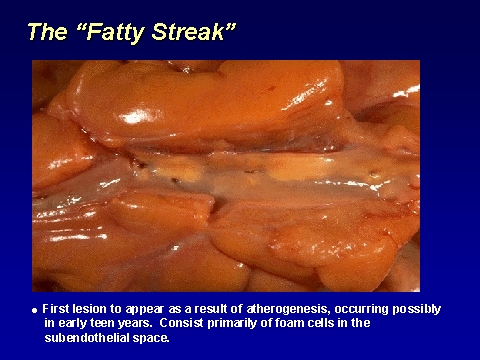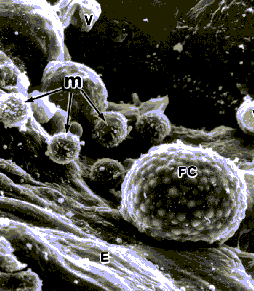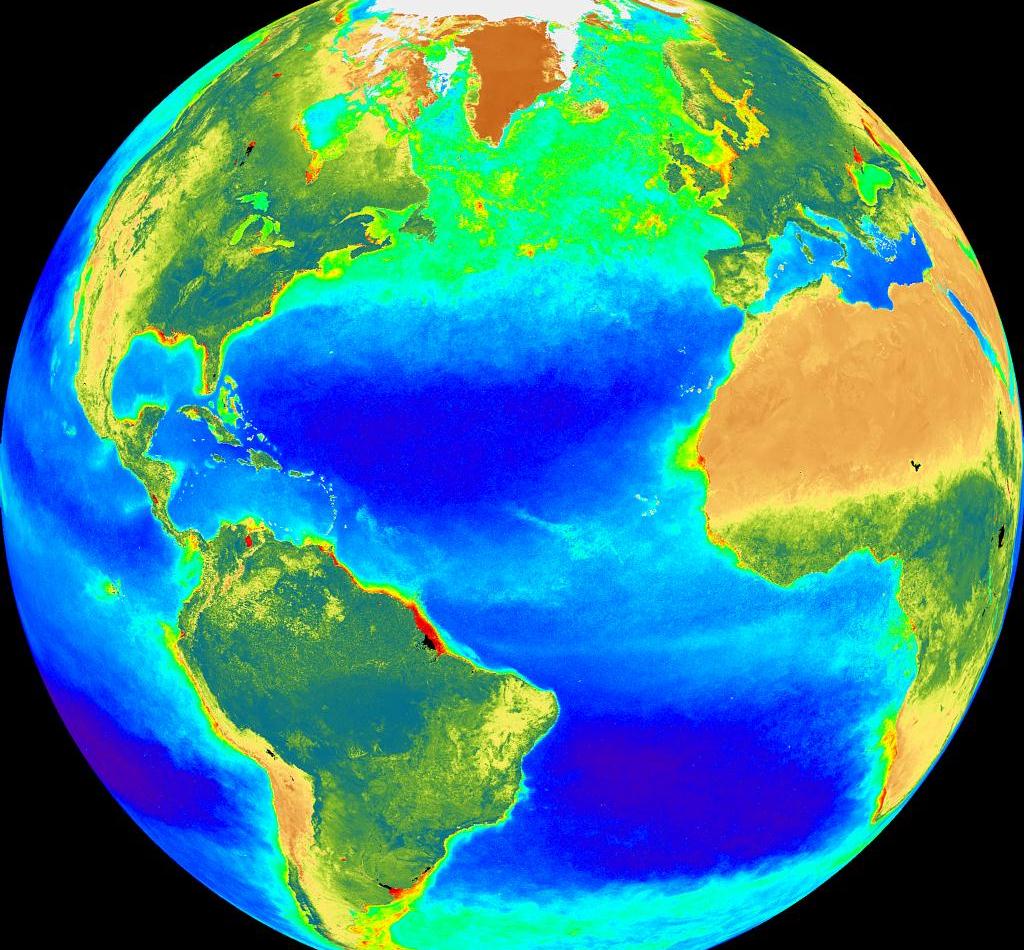| School of
Mathematics & Statistics UNIVERSITY OF GLASGOW |
| Professor Nick Hill - Research Interests |
Modelling of Arterial Disease
 I am modelling the
early stages of atherosclerosis, specifically intimal
hyperplasia, in which there is a feedback mechanism
between the permeability of the endothelium lining the
artery, the absorption of cholesterol, swelling of the
intima in the wall of the artery which pushes the
endothelium into the lumen of the artery, and the shear
stress exterted on the wall by the flow of blood. This
work is being carried out in consultation with vascular
surgeons at St. James's University Hospital and
physiologists at Imperial College. The ultimate aim is to
predict the effects of proposed treatments on the
progression of the disease. Two PhD students are working
on this project, funded by the EPSRC and the MRC. I am
also studying the progression and rupture of abdominal
aortic aneurysms together with colleagues from vascular
surgery both at Leeds and at Good Hope Hospital in
Birmingham.
I am modelling the
early stages of atherosclerosis, specifically intimal
hyperplasia, in which there is a feedback mechanism
between the permeability of the endothelium lining the
artery, the absorption of cholesterol, swelling of the
intima in the wall of the artery which pushes the
endothelium into the lumen of the artery, and the shear
stress exterted on the wall by the flow of blood. This
work is being carried out in consultation with vascular
surgeons at St. James's University Hospital and
physiologists at Imperial College. The ultimate aim is to
predict the effects of proposed treatments on the
progression of the disease. Two PhD students are working
on this project, funded by the EPSRC and the MRC. I am
also studying the progression and rupture of abdominal
aortic aneurysms together with colleagues from vascular
surgery both at Leeds and at Good Hope Hospital in
Birmingham.  One MRC-funded PhD student is working on
this and the work was awarded the Prize for the Best
Poster in the Cardio-Vascular Section at the ASME 2001
Bioengineering Conference. Both projects will lead to a
better understanding of the function and disease processes
of the arterial wall and there is potential for further
funding from companies that make vascular grafts and
stents.
One MRC-funded PhD student is working on
this and the work was awarded the Prize for the Best
Poster in the Cardio-Vascular Section at the ASME 2001
Bioengineering Conference. Both projects will lead to a
better understanding of the function and disease processes
of the arterial wall and there is potential for further
funding from companies that make vascular grafts and
stents.
Modelling of Control Mechanisms in Micro-Organisms and Animals
Many micro-organisms are motile and actively seek optimum environments, for example bacteria swim up and down chemical gradients (chemotaxis) and the ciliate Tetrahymena swims vertically upwards (negative gravitaxis). I have worked on simple models for the important control mechanism of phototaxis (responses towards light) which enables swimming algal cells to find the best habitat for photosynthesis. A model based on the shading of the cell's photoreceptor which periodically scans its environment as the whole cell rotates when swimming along was developed to explain experiments on responses to multiple sources of light (Hill & Vincent 1993). Recently, I have extended this work to include on responses to polarised light (Hill & Plumpton 2000). I have also carried out experimental and theoretical work on the measurement and analysis of trajectories of swimming cells which has lead to new techniques for assessing cell motility (Hill & Häder 1997). I am investigating the use of stochastic differential equations and random walks to better describe the average motion and dispersion of populations of swimming cells. In collaboration with Prof. Alan Roberts (Biology, Bristol), I have explained how immature tadpoles without a fully-developed inner ear control complicated escape manoeuvres using passive mechanical torques. These are all fundamental problems in biology and important in their own right, but they may find future application in the control of microscopic robots made possible by developments in nanotechnology.
Pattern Formation by Oceanic Plankton
 The modelling of
plankton blooms in the Atlantic and Pacific Oceans as an
excitable system has been pioneered by the research group
in biomathematics at Leeds. I have collaborated with
colleagues in Applied Mathematics and Physiology at Leeds
to study the effects of the relative motion of the
excitable medium on wave propagation as a model for the
effects of ocean currents on the blooms (Biktashev et al.
1998). A PhD student and I are now modelling the effects
of microzooplankton in a three-component model for oceanic
blooms. The microzooplankton are thought by ecologists to
play an important role in controlling blooms because they
reproduce at a similar rate to the phytoplankton on which
they forage. Understanding the blooms and the factors that
control them is of great environmental and economic
importance because the plankton are at the bottom of the
oceanic food chain.
The modelling of
plankton blooms in the Atlantic and Pacific Oceans as an
excitable system has been pioneered by the research group
in biomathematics at Leeds. I have collaborated with
colleagues in Applied Mathematics and Physiology at Leeds
to study the effects of the relative motion of the
excitable medium on wave propagation as a model for the
effects of ocean currents on the blooms (Biktashev et al.
1998). A PhD student and I are now modelling the effects
of microzooplankton in a three-component model for oceanic
blooms. The microzooplankton are thought by ecologists to
play an important role in controlling blooms because they
reproduce at a similar rate to the phytoplankton on which
they forage. Understanding the blooms and the factors that
control them is of great environmental and economic
importance because the plankton are at the bottom of the
oceanic food chain.
Bioconvection
 Suspensions of swimming micro-organisms
spontaneously form patterns associated with up- and
down-welling of the fluid. I have helped to elucidate the
physical and biological mechanisms in this paradigm for
biological complexity by developing mathematical models
and analysing them using a variety of linear, nonlinear
and computational techniques. A current interest is the
development of statistical methods for the quantitative
description of the patterns which promise to have a wide
range of applications.
Suspensions of swimming micro-organisms
spontaneously form patterns associated with up- and
down-welling of the fluid. I have helped to elucidate the
physical and biological mechanisms in this paradigm for
biological complexity by developing mathematical models
and analysing them using a variety of linear, nonlinear
and computational techniques. A current interest is the
development of statistical methods for the quantitative
description of the patterns which promise to have a wide
range of applications.
Fluid Mechanics of Suspensions
Previously I have worked on dispersion in sedimenting colloidal suspensions (Davis & Hill 1992) and a research project is available for a PhD student to work on pairwise hydrodynamic interactions between small particles in a chamber rotating about a horizontal axis. This is expected to lead to an interesting dynamical system and it has application in chemical engineering and to experiments on the reorientation of swimming micro-organisms (Kessler et al. 1998).